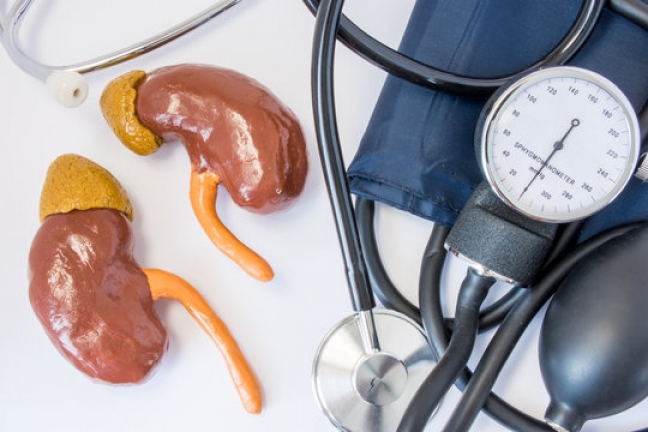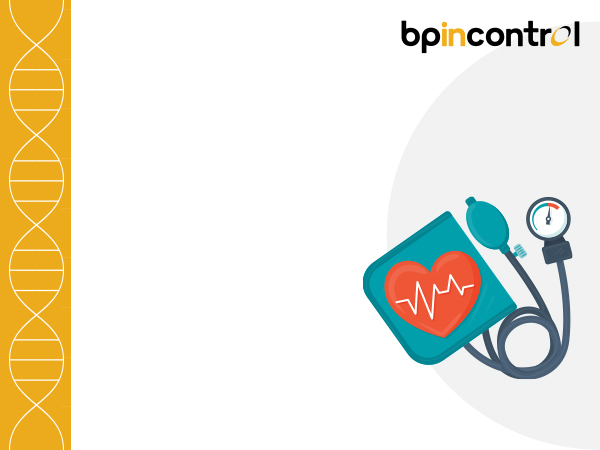What is Renovascular Hypertension?

Table of Contents
High blood pressure or hypertension is a common medical condition that affects millions of people worldwide. However, there is a specific type of hypertension that is less well-known but can be just as serious: Renovascular Hypertension.
This condition occurs when there is a blockage or narrowing in the blood vessels leading to the kidneys, resulting in high blood pressure. In this article, we will guide you in understanding what renovascular hypertension is, its causes, symptoms, diagnosis, and treatment options.
What is Renovascular Hypertension?
Renovascular hypertension, also known as renal hypertension, can be a serious medical condition that affects the kidneys and the heart. It is caused by the narrowing or blockage of the renal arteries that supply blood to the kidneys, which can result from kidney diseases. This can lead to an increase in blood pressure, which can damage the kidneys, heart, and other organs in the body.
The risk factors for renovascular hypertension are numerous, and many of them are related to high blood pressure and high cholesterol. For example, high blood pressure at a younger age can increase the risk of developing this condition. However, lifestyle changes such as quitting smoking, maintaining a healthy weight, and staying active can help to reduce the risk of developing this condition. People with a family history of renovascular hypertension should also be aware of their increased risk.
Diagnosing renovascular hypertension can involve a series of tests and examinations to determine the cause and severity of the condition, which can help identify kidney diseases. These tests may include blood and urine tests, as well as imaging studies such as magnetic resonance angiography (MRA) or computed tomography angiography (CTA) to visualise the blood vessels and any blockages or narrowing. A healthcare provider may also perform renal arteriography, which involves injecting a contrast dye into the renal arteries to visualise blockages or narrowings and can help diagnose renovascular hypertension.
How does high blood pressure hurt the kidneys?
High blood pressure can have detrimental effects on various organs in the body, including the kidneys. The kidneys play a crucial role in regulating blood pressure by filtering waste products and excess fluids from the blood. When the blood vessels that supply the kidneys become narrowed or blocked, it can cause an increase in blood pressure, leading to renal hypertension.
When the kidneys do not receive enough blood due to narrowed or blocked arteries, they release hormones that can increase blood pressure. This creates a vicious cycle where high blood pressure leads to kidney damage, which further worsens blood pressure control. Over time, the damage to the kidneys can progress, leading to a decline in kidney function and potentially resulting in kidney failure.
Furthermore, high blood pressure can damage the tiny blood vessels in the kidneys, called nephrons, which are responsible for filtering waste from the blood. When these blood vessels become damaged, the kidneys may not be able to filter waste properly, leading to the buildup of harmful substances in the blood. This can also contribute to the development of kidney disease, which can further worsen blood pressure control and cause further damage to the kidneys.
Note: High blood pressure does not always cause symptoms, which is why regular check-ups and blood pressure monitoring are essential for early detection and treatment.
What causes Renal Hypertension?
Renal hypertension is caused by a variety of factors, including:
- Renal Artery Stenosis: The narrowing of the renal arteries that causes renal hypertension can occur due to the accumulation of plaque or other substances on the artery walls. It can also be caused by structural abnormalities such as abnormal curvature or twisting of the arteries.
- Fibromuscular Dysplasia: Fibromuscular dysplasia is more common in women and can cause the renal arteries to become twisted and narrowed due to the development of fibrous growths. The condition can also affect other arteries in the body.
- Atherosclerosis: Atherosclerosis is a gradual process that can lead to the narrowing of the renal arteries and reduced blood flow to the kidneys. This can occur due to a buildup of cholesterol, fats, and other substances on the artery walls.
- Kidney Disease: Chronic kidney disease can lead to renal hypertension as the kidneys play a crucial role in regulating blood pressure. When kidney function is compromised, the body may produce more hormones that increase blood pressure.
- Hormonal Imbalances: Cushing’s syndrome is a condition that occurs when the body is exposed to high levels of the hormone cortisol for an extended period of time. This can cause hormonal imbalances and lead to high blood pressure and renal hypertension.
- Medications: Some medications used to treat high blood pressure or heart disease can cause renal hypertension as a side effect. Medications such as NSAIDs (nonsteroidal anti-inflammatory drugs) can constrict blood vessels, which can lead to an increase in blood pressure. A few of the other medications are corticosteroids and immunosuppressants. These drugs can cause an increase in sodium retention and a decrease in potassium levels, which can lead to an increase in blood pressure.
- Genetics: In rare cases, renal hypertension may be caused by genetic disorders such as fibromuscular dysplasia, Alport syndrome, or polycystic kidney disease. These conditions can affect the structure or function of the renal arteries and kidneys, leading to hypertension.
What are the signs and symptoms of Renovascular Hypertension?
Renovascular hypertension can have a range of symptoms that can be similar to other conditions, making it difficult to diagnose. Here are some common signs and symptoms of renovascular hypertension:
- Unexplained and sudden onset of high blood pressure
- Headaches
- Sudden weight loss
- Rapidly progressing kidney dysfunction
- Decreased urine output
- Swelling in the legs and ankles
- Sleep-related issues, drowsiness, or tiredness
- Shortness of breath
- Chest pain
- Fatigue
What are the Treatments for Renal Hypertension?
Renal hypertension is a serious medical condition that requires immediate attention to prevent life-threatening complications such as heart attack or heart failure. However, there are effective treatments available to control high blood pressure and maintain the functionality of kidneys.
Medication is often the first line of treatment for Renovascular hypertension. There are several types of medication that can be prescribed, including diuretics, ACE inhibitors, Angiotensin II Receptor Blockers, and calcium channel blockers. These medications work by increasing urine output, relaxing blood vessels, or reducing the amount of Angiotensin II produced in the body.
Along with medication, lifestyle changes are also essential to managing Renovascular hypertension. Eating a healthy diet, exercising regularly, and managing stress can all contribute to lowering blood pressure and reducing the risk of complications. Quitting smoking and limiting alcohol consumption can also have a positive impact on blood pressure and overall health.
In some cases, surgery may be necessary to treat renal hypertension. This could involve removing a blockage or narrowing in the renal artery or repairing a damaged blood vessel. Surgery is typically only recommended when medication and lifestyle changes have not been effective or when there is a significant risk of complications.
It is crucial to work closely with a healthcare provider to develop a personalised treatment plan for renal hypertension. By adhering to the recommended treatment plan and making necessary lifestyle changes, people with Renovascular hypertension can effectively manage their condition and reduce the risk of complications such as heart attack or heart failure.
Summing Up
Ultimately, it’s crucial to understand that renovascular hypertension is not a condition to be taken lightly. Ignoring its symptoms can lead to life-altering consequences. Therefore, it’s vital to be vigilant and recognize the signs.
If you experience any of these symptoms, it’s imperative to consult with a healthcare provider as soon as possible to receive a proper diagnosis and begin a suitable treatment plan. Remember, your health is your top priority, and addressing any health concerns promptly can make all the difference.
If you’re seeking a healthcare provider who can help you manage your blood pressure and any underlying kidney diseases, BP In Control has a network of trusted physicians across India.
Don’t wait until it’s too late. Take control of your health today with the help of BP In Control.
FAQs
1. How is renovascular hypertension diagnosed?
Various methods can be used to diagnose renovascular hypertension, including blood pressure measurement, renal artery duplex ultrasound, magnetic resonance angiography, or renal arteriography. Your healthcare provider will determine the most suitable method based on your specific case.
2. What are the 3 early warning signs of kidney disease?
The three early warning signs of kidney disease include changes in urination patterns, swelling in the hands, feet, or face, and fatigue. However, it’s important to note that kidney disease may not show any symptoms in its early stages, which is why regular kidney function testing is recommended for people at risk.
3. How do you reduce renal hypertension?
The treatment for renal hypertension depends on the underlying cause and severity of the condition. It may involve medications to lower blood pressure, surgical intervention, angioplasty, or lifestyle changes such as quitting smoking, losing weight, regular exercise, and reducing salt intake. Working closely with a healthcare provider to determine the most effective treatment plan is crucial for managing renal hypertension.
Disclaimer
The information contained in this article is to educate, spread awareness in relation to hypertension and other diseases to the public at large. The contents of this article are created and developed by BPinControl.in through its authors, which has necessary, authorisations, license, approvals, permits etc to allow usage of this articles on The Website. The views and opinions expressed in this article are views, opinions of the respective authors and are independently endorsed by doctors. Although great care has been taken in compiling and checking the information in this article, The Website shall not be responsible, or in any way liable for any errors, omissions or inaccuracies in this article whether arising from negligence or otherwise, or for any consequences arising therefrom. The content of this article is not a substitute for any medical advice. The Website shall not be held responsible or liable for any consequence arising out of reliance on the information provided in the article.


Comments (0)
No comments found.Add your comment